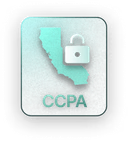Blog
Resource library
Expert insights, industry trends, and technology breakthroughs in healthcare and analytics.

From Notes to Codes: A Simple Walkthrough of Diagnostic Code Mapping with Bioteknika
This blog explores Bioteknika’s diagnostic code mapping interface, which uses a hybrid AI approach to suggest ICD-10 codes based on confidence scoring. Includes real input/output examples and a breakdown of both upload-based and manual entry workflows.
Read post

Conversational AI in Healthcare: Hype vs. Real Impact
Conversational AI is often hyped as a magic solution for healthcare, but its real impact is found in well-scoped, structured deployments. This blog breaks down where AI chatbots are already streamlining executive workflows, supporting clinicians, and reducing IT load—and where caution is still needed. If you’re evaluating AI for your health system, this is the clarity you need.
Read post

From Automation to Intelligence: What AI Chatbots Mean for Healthcare Transformation
Healthcare’s digital journey is evolving—from simple task automation to intelligent, adaptive systems. This blog explores how AI chatbots are leading that shift, transforming how clinical teams, executives, and staff interact with data, systems, and decisions. From role-based insights to continuous learning, it’s a new era of healthcare transformation—powered by conversation.
Read post

The Role of AI Chatbots in Hospital Cost Reduction and Resource Optimization
Hospitals are under pressure to cut costs without compromising care. This blog outlines how AI chatbots reduce expenses by replacing static reports, minimizing clinical downtime, accelerating discharge planning, and lowering IT support loads. The result? A leaner, smarter hospital operation without adding new complexity.
Read post

Smart Rounds: How AI Chatbots Enhance Daily Clinical Workflows
AI chatbots are transforming how clinicians prepare for and conduct daily rounds. Instead of spending valuable minutes navigating EHR tabs, care teams now start their shifts with one-tap access to assigned patients, pending labs, flagged events, and critical updates. This blog explores six key ways smart rounds powered by conversational AI are improving efficiency, safety, and clarity for every team member.
Read post

10 Clinical Tasks AI Chatbots Can Handle in Under 10 Seconds
Speed is everything in clinical care. This blog highlights 10 real-world tasks that doctors and care teams can complete in under 10 seconds using an internal AI chatbot. From checking labs to retrieving notes or scheduling reminders, these examples demonstrate how conversational AI reduces clicks, cuts delays, and lightens the cognitive load for frontline staff.
Read post

ICD-10, ICD-11, SNOMED CT, and Code Mapping: Everything You Need to Know
ICD-10, ICD-11, and SNOMED CT are essential coding systems in healthcare, each serving different purposes—from billing and public health tracking to detailed clinical documentation. To bridge these systems, diagnostic code mapping translates clinical terms between terminologies like SNOMED and ICD. This ensures accurate data exchange, faster reimbursement, and better decision support. Understanding and implementing proper mapping strategies is key to building interoperable, efficient healthcare systems.
Read post

How to Simplify ICD and SNOMED Interoperability Across Systems
ICD and SNOMED serve different roles in healthcare—one for billing and reporting, the other for clinical documentation and decision support. Bridging these systems is essential for accurate data exchange, consistent coding, and reliable analytics. This blog outlines five key strategies for simplifying interoperability: defining use-case-driven mapping, implementing real-time bidirectional translation, validating mappings with real clinical data, accounting for diagnostic context and hierarchy, and maintaining versioned, regularly updated maps. A thoughtful, tech-enabled mapping approach ensures diagnostic data is understood the same way across systems—supporting better care, compliance, and collaboration.
Read post

The Role of AI in Enhancing Diagnostic Code Mapping Accuracy
Diagnostic code mapping is foundational to healthcare operations. And when AI is introduced to extract and translate codes from clinical documents, the result is a faster, more consistent, and more scalable process. But the value goes beyond speed.
Read post

The Hidden Cost of Disconnected Data in Healthcare
Disconnected data isn’t just a technical nuisance. It’s a direct threat to patient care, operational efficiency, and the credibility of healthcare institutions. And while electronic systems have become more common, the fragmentation between them continues to undermine their purpose.
Read post

How Patient Registries Drive Real-World Evidence—and Why It Matters
RWE is gaining traction not just with researchers, but with policymakers and payers. Regulatory bodies like the FDA and EMA are increasingly using RWE
Read post





